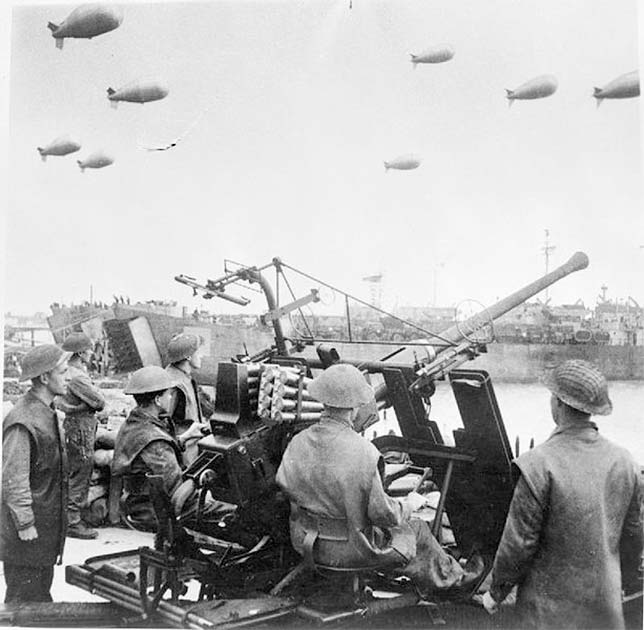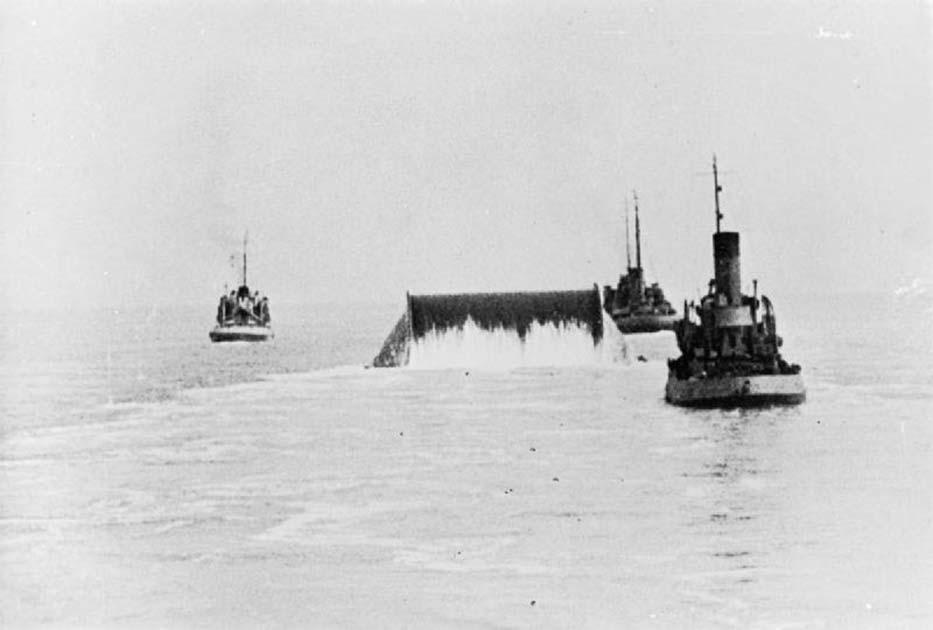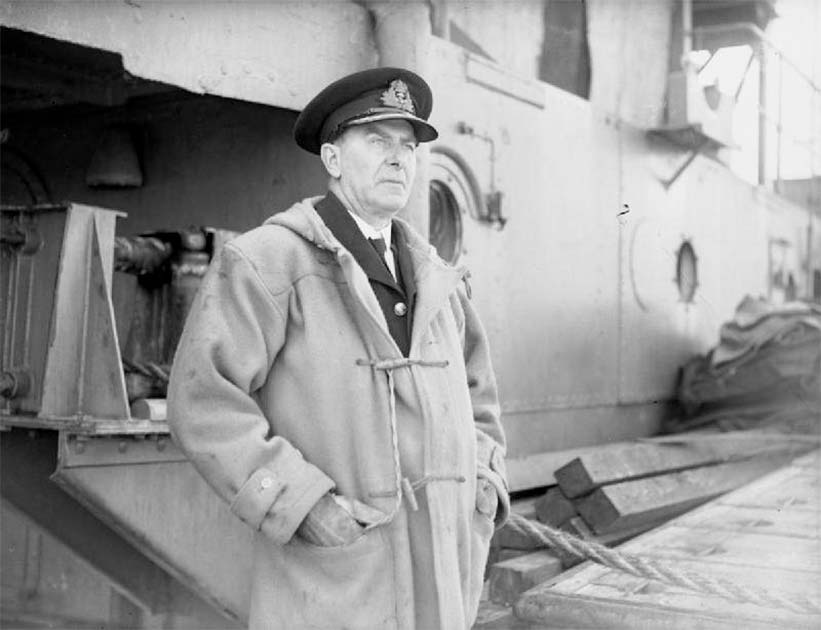D-Day was one of the most pivotal moments in history. An enormous invasion force risked everything to gain a toehold in continental Europe, cracking the Nazi stranglehold on France.
This was not an easy task, and the Allies realized the tantamount importance that this battle not only was won, but stayed won. D-Day was an enormous logistical undertaking, and perhaps the least known part of this was Operation Pluto.
This covert operation, often dubbed “D-Day’s Greatest Secret,” played a crucial role in the success of the Allied forces in Europe. Its mission was to supply the Allied war machine with the fuel it needed as it marched ever onward toward Germany by laying pipelines down beneath the English Channel.
Logistics wins wars and Operation Pluto was one of the greatest logistical missions ever undertaken.
A Covert Engineering Marvel
Operation Pluto, also known as the Pipeline Under the Ocean or Pipeline Underwater Transportation Oil, was a clandestine engineering project conceived by the British government during World War II. It was designed to solve a logistical conundrum the Allies were facing having successfully completed the D-Day landings in 1944.
The Allies were making significant advances into German-occupied territory and needed a reliable and efficient means of transporting fuel across the English Channel. Without a supply line, the invasion was on borrowed time.

Up until this point the Allies had been reliant on coastal tankers which came with several severe drawbacks- they were vulnerable to harsh weather, attack from the air, and had to be offloaded into vulnerable shoreside tanks. Operation Pluto on the other hand centered around the construction of an ingenious network of pipelines laid on the seabed, connecting the Isle of Wight to Cherbourg in Normandy, France.
These pipelines, comprising both flexible Hais and rigid Hamel types, were engineered to withstand the harsh conditions of the ocean floor. The flexibility of the Hais pipelines allowed them to be wound onto large drums for easier transport and deployment, while the Hamel pipelines were designed for more challenging terrains.
Outside of wartime, this would have been an impressive engineering feat, during wartime it was a marvel. For the operation to succeed it had to be carried out under complete operational secrecy. This wonder of covert engineering played a pivotal role in sustaining the momentum of the Allied advance into enemy territory.
- Operation Bernhard: The Nazi Forgery Targeting WW2 Britain (Video)
- Operation Ivy Bells: the CIA is Listening, Comrade
In essence, Operation Pluto was intended to be a lifeline, a hidden artery feeding the Allied war machine and ensuring sustained pressure on the Axis powers. The success of this covert mission would determine the ability of the Allied forces to outmaneuver and ultimately defeat the German forces on the European front.
The success of Operation Pluto hinged not only on its engineering brilliance but also on those involved keeping the operation’s existence hidden from enemy forces. The secretive nature of the operation was paramount to its success, requiring meticulous planning and strict security measures.
Like any secret operation, the pipeline plan needed a codename, and Operation Pluto was chosen. Why Pluto? Probably because in Roman mythology Pluto was the god of the underworld and these pipes were going deep under the ocean’s surface.
The engineers working on the design of the pipelines referred to the project as Operation Tombola, simply because tombolas have nothing to do with pipelines (unlike “pluto” which literally stood for “pipe line under the ocean”). The development and deployment of the pipelines were classified at the highest levels, with access limited to those with a need-to-know basis.
The problem with secrets is that the more people who know about them, the more likely it is for a leak to occur. Operation Pluto wasn’t just an engineering feat, there was a lot of construction needed too. Construction sites were strategically chosen, and workers involved in the project were often unaware of the broader context of their efforts.
The flexible Hais pipelines were wound onto large drums and transported under the guise of other military supplies, further concealing their true purpose. As for the rigid Hamel pipelines, their deployment required specialized equipment, which was transported discreetly to the chosen locations.

The laying of the pipelines, which required an incredible degree of precision, was carried out under the cover of darkness to avoid detection. This was no easy feat when one considers the challenges of working on the ocean floor. Surveillance and reconnaissance efforts by both air and sea were intensified to detect any signs of suspicious activity that could reveal the operation.
It’s amazing to think they managed to complete the operation without the enemy realizing. In this cloak-and-dagger world of wartime secrecy, Operation Pluto’s construction unfolded behind a curtain of strategic misdirection and careful concealment.
Success or Failure?
There is some disagreement between historians as to whether Operation Pluto was truly a success. Some claim that Operation Pluto succeeded in its primary mission: to establish a reliable and efficient means of transporting fuel across the English Channel to support the advancing Allied armies.
- Fight Them on the Beaches: the Remains Of The Allied D-Day Landings (Video)
- The Kugelpanzer: Why Did the Nazis Build a Spherical Tank?
The undersea pipelines played a crucial role in sustaining the momentum of the Allied offensive by providing a steady and secure source of fuel for vehicles, tanks, and aircraft. This ensured that the Allied forces could maintain their push into German-occupied territory without the logistical hindrances that had plagued previous military campaigns.
These historians would say that the impact of Operation Pluto on the overall war effort was profound. By circumventing the need for traditional fuel supply routes, which were vulnerable to disruption by enemy forces, Pluto provided a strategic advantage to the Allies. The operation contributed to the flexibility and mobility of the Allied forces, allowing them to outmaneuver the German defenses and exploit weaknesses in the enemy lines.

Others, however, are less convinced that Operation Pluto had such a profound effect. The operation was plagued by a series of delays and technical difficulties. Of the two lines, Bambi and Dumbo, Bambi was the most troublesome to get working.
The laying of the pipelines across the Bristol Channel and Solent had been carried out by expert technicians guided by the designers. Laying the pipeline on the French end, however, came down to naval laying parties who weren’t as experienced. Repeated setbacks even led to the Allies considering abandoning the operation completely.
In the end, Bambi only ran from 22 September 1944 to October 3, 1944. Just 3,300 long tons (3,400 t, 4,250,000 L) had been pumped. Dumbo, on the other hand, ran for much longer and managed to carry 180 million imperial gallons (820 million liters) of petrol, a much more impressive feat.
A Solid Foundation
The ultimate success of Operation Pluto was evident in its ability to meet the critical need for a secure and reliable fuel supply for the advancing Allied forces. By surmounting the logistical challenges that had hindered previous military campaigns, Pluto became a silent architect of victory, enabling the Allies to maintain their offensive momentum and press further into enemy territory.
Top Image: Pipe lengths stored for Operation Pluto. Source: Official Photographer / Public Domain.
